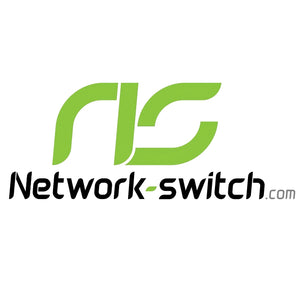In today's digital era, the demand for faster and more reliable network connections is ever-increasing. Whether it's for streaming high-definition content, transferring large files, or supporting numerous connected devices, traditional Gigabit Ethernet (1GbE) may no longer suffice. Enter 10 Gigabit Ethernet (10GbE), a technology that offers ten times the speed of its predecessor.
But what exactly is 10GbE, and is it necessary for your network? This article delves into the world of 10GbE, exploring its applications, benefits, and how to prepare for its implementation.

What is 10 Gigabit Ethernet?
10 Gigabit Ethernet (10GbE) is a network technology standard that enables data transmission speeds of up to 10 billion bits per second. Defined by the IEEE 802.3ae standard in 2002, 10GbE operates exclusively in full-duplex mode, eliminating the need for collision detection mechanisms present in earlier Ethernet versions.
It supports various physical media, including copper (10GBASE-T) and fiber optics (10GBASE-SR, 10GBASE-LR), allowing for flexible deployment across different network infrastructures.
What Is 10GbE Usually Used For?
10GbE is predominantly utilized in environments where high data throughput and low latency are critical. Common applications include:
Data Centers: Facilitates rapid data transfer between servers and storage systems.
Enterprise Networks: Supports bandwidth-intensive applications like virtualization and large-scale data analytics.
Media Production: Enables seamless editing and transfer of high-resolution video and audio files.
Scientific Research: Handles massive datasets generated by simulations and experiments.
High-Performance Computing (HPC): Provides the necessary bandwidth for complex computational tasks.
Additionally, with the rise of smart homes and IoT devices, some tech enthusiasts are integrating 10GbE into home networks to future-proof their setups and ensure optimal performance.

Why Do We Need a 10G Network?
The transition to 10GbE is driven by several factors:
- Increased Data Consumption: With the proliferation of high-definition content and cloud-based services, networks require higher bandwidth to prevent bottlenecks.
- Enhanced Productivity: Faster data transfer rates reduce waiting times, leading to improved efficiency in professional environments.
- Scalability: 10GbE provides the necessary infrastructure to accommodate future technological advancements and growing data demands.
- Reduced Latency: Essential for applications like online gaming, video conferencing, and real-time data processing.
Implementing a 10G network ensures that your infrastructure remains robust and capable of handling current and future networking requirements.
How to Prepare for 10 Gigabit Ethernet?
Transitioning to a 10GbE network involves several considerations:
Cabling: Ensure your infrastructure supports the necessary cabling standards. For copper connections, Cat6a or higher is recommended. For longer distances, fiber optics may be more suitable.
Network Interface Cards (NICs): Upgrade devices with NICs that support 10GbE to fully utilize the increased bandwidth.
Switches: Invest in switches capable of handling 10GbE speeds. Below are two recommended models:
Recommended Products
Ruijie RG-S6120 Series
Ports: 20 x 10GE SFP+, 4 x 25GE SFP28, 2 x 40GE QSFP+
Features: High-density port configuration suitable for core or aggregation layers in enterprise networks. Supports advanced features like VXLAN, ensuring scalability and flexibility.
Huawei CloudEngine S6730 Series
Ports: High-density 10GE downlink and 100GE uplink ports
Features: Integrates native WLAN AC capabilities, supports up to 1024 WLAN access points, and offers advanced security features like Encrypted Communications Analytics (ECA).
Both switches are designed to meet the demands of modern networks, offering high performance, scalability, and robust security features.
Conclusion
10 Gigabit Ethernet represents a significant leap in networking capabilities, addressing the growing demands of data-intensive applications and services. While not every environment requires 10GbE immediately, adopting this technology ensures that your network remains efficient, scalable, and future-ready.
By understanding its benefits and preparing accordingly, you can make informed decisions that align with your networking needs.
Frequently Asked Questions
Q1: Is 10GbE backward compatible with existing networks?
A: Yes, 10GbE devices can interoperate with lower-speed networks, but the connection will operate at the speed of the slower device.
Q2: Can I use my existing Ethernet cables for 10GbE?
A: It depends on the cable type. Cat6a or higher is recommended for 10GbE over copper. Older cables like Cat5e may not support the required speeds reliably.
Q3: Is 10GbE necessary for home networks?
A: For typical home usage, 1GbE is often sufficient. However, for activities like large file transfers, media editing, or running a home lab, 10GbE can provide significant benefits.
Q4: What are the main challenges in upgrading to 10GbE?
A: The primary challenges include the cost of new equipment, ensuring compatibility with existing infrastructure, and the need for appropriate cabling.
Q5: How does 10GbE impact network security?
A: While 10GbE itself doesn't inherently enhance security, the increased speed can support more robust security protocols and faster threat detection and response mechanisms.
Did this article help you or not? Tell us on Facebook and LinkedIn . We’d love to hear from you!






 https://network-switch.com/pages/about-us
https://network-switch.com/pages/about-us


